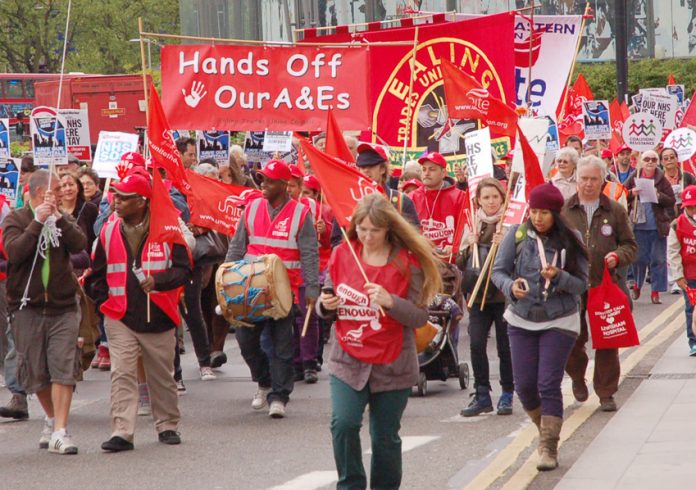HEALTH Secretary, Jeremy Hunt, has agreed to the relaxing of ambulance response times for some ‘Red 2’ category patients, which include those with strokes, fits and some car crash victims.
The pilot scheme will be rolled out for the South West and London regions, in February this year, affecting 13 million people.
The GMB union has warned that more patients’ deaths will arise in the London and South West as a result.
The current ‘Red 1’ patients, (the most life threatening) will not be affected, while some ‘Red 2s’ (serious cases) will become ‘Red 1’.
For the remaining ‘Red 2’ patients, call handlers will take three minutes rather than one minute to decide whether to send out an ambulance or just a responder car to the patient.
Three million ‘Red 2’ patients are dealt with by the ambulance service a year.
Hunt said the pilot results would be clinically assessed to make sure they would ‘reduce overall clinical risk’ and increase ‘operational efficiency’.
He admitted that the main aim is to reduce the number of vehicles sent to each 999 call.
Hunt has responded to a letter from the head of NHS England’s Director for Acute Care, Professor Keith Willett in which he claimed: ‘The majority of patients currently coded as “Red 2” do not ultimately derive clinical benefit from the arrival of an ambulance resource within 8 minutes.’
Judging by the recent secret trials of relaxing ambulance times in Eastern and Yorkshire regions ambulance services, it is likely that around 40% of ‘Red 2’ patients will be affected by the change.
The management of Eastern region are known to have wanted 43% of ‘Red 2s’ downgraded to a 19-minute response time.
Tony Hughes, GMB regional officer for Ambulance service in London and East of England, said: These pilots in London and the South West are ridiculous. They will only serve to bring worse outcomes for patients.
‘The run up to the general election is clearly a factor so that the Tories can show that Ambulance Services are meeting their targets. This is so far from the truth.
‘We will see people die more often than we see at the moment from conditions that can be treated if the right resource is got to them in good time.
‘The whole of the Accident and Emergency structures are at breaking point due the changes this government has already made.
‘There are a number of issues why there are slow responses in the service such as no beds at hospitals, the new Clinical Commissioning Groups funding fewer opportunities to access other medical assistance, the closing of A&E departments and walk-in centres and the new 111 service.
‘All these issues have led to Accident and Emergency Services to be at breaking point. In 2011, the GMB warned that the government’s scrapping of the category B target for ambulances to arrive at the scene of an incident within 19 minutes of the call being received and replacing it with a set of 11 new clinical quality indicators would open the door to cuts being made and we have now been proven right.’
